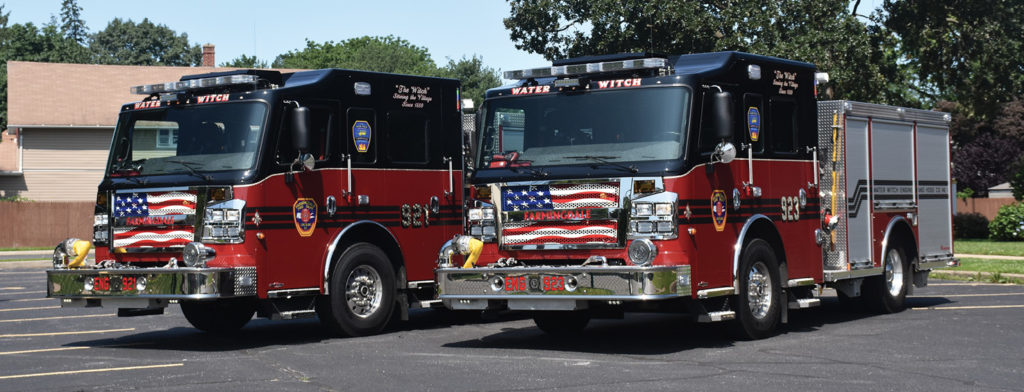
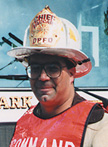
Many fire departments, paid and volunteer, across the country have storied, historical pasts. The Farmingdale Fire Department, located in Nassau County on Long Island, is one of those departments.
Organized in 1892, the department was originally formed through the combination of Hook, Ladder and Hose Company (1886) and the Water Witch Engine and Hose Company #1 (1889). The fire companies served the area known as Hardscrabble, then known as the Village of Farmingdale and Central Park and now known as Bethpage and part of Plainview.
The fire company began operation using horses and hand-pulled carts to provide fire protection in its area. The Water Witch engine was manufactured by the Button and Blake Fire Engine Company back in 1858. It could pump 225 gallons per minute (gpm) at the time and is still owned and maintained by the Farmingdale Fire Department and brought to parades and musters around the East Coast.
The present department covers approximately 1.2 square miles of residential homes and apartments and a downtown commercial area that has numerous stores and restaurants. It also has one of the main lines of the Long Island Railroad going through the village.
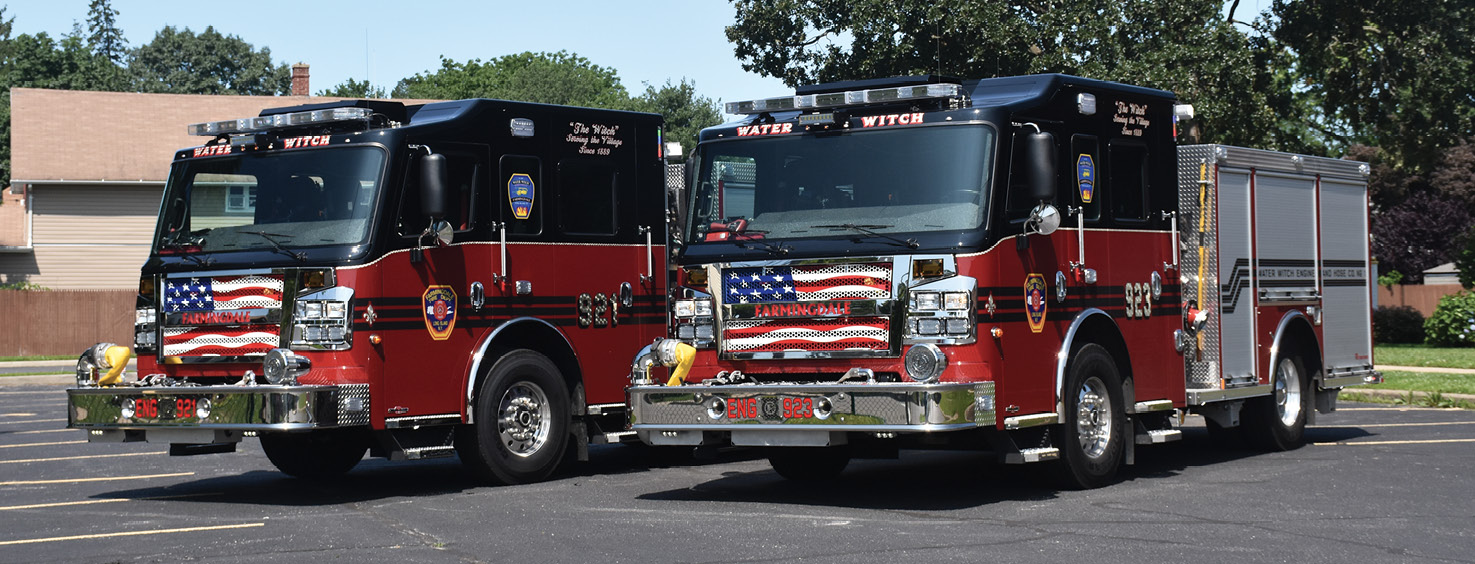
1 The twin Rosenbauer Commander pumpers for the Farmingdale (NY) Fire Department. (Photos by author.)
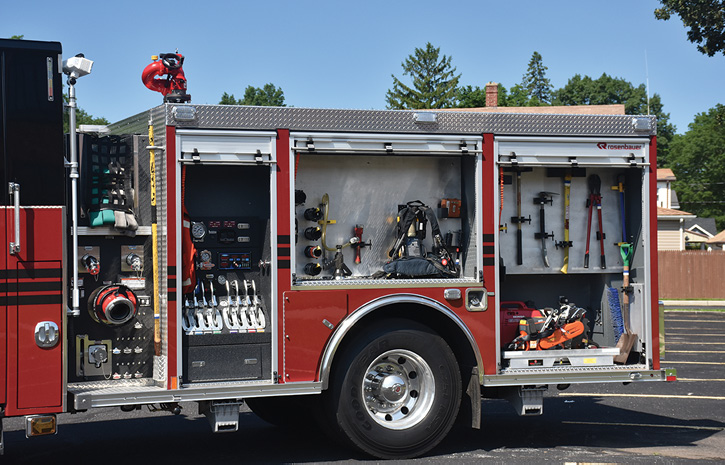
2 The driver’s side narrow pump panel and large compartments with engine company fittings, forcible entry tools, and saw.
TRUCK PLANNING
Assistant Chief Walter Buser says, “We began planning for the purchase of our new engines two years ago. We formed a truck committee consisting of two ex-chiefs, a commissioner, a chief, the present company captain, and the incoming captain to get all of their ideas.”
“The two engines that made up the present Water Witch Fire Company consisted of a 1989 Spartan/Saulsbury and a 1993 Spartan/FMC. They were 30 and 26 years old and needed to be replaced,” he continues. “We have to work with our village for finances and cannot always replace apparatus in a 20- to 25-year time frame like most departments around the country can. However, we worked it out with the mayor and village’s trustees to replace both pumpers at the same time, saving us money and a great deal of time.” The department was able to work with one of the apparatus purchasing consortiums to purchase the type of vehicles it wanted. According to Buser, it was the most efficient and effective way to purchase the two vehicles at the same time.
Another challenge the department had during this purchase is that the fire station from which it operates is old, and space is at the premium. “So, the apparatus we designed had to have a short wheelbase,” says Buser. “After researching various manufacturers, we decided to go with Rosenbauer for this dual purchase.”
Farmingdale (NY) Fire Department Pumpers |
DESIGNING THE ENGINES
Buser says the Rosenbauer engineers were great to work with. “They gave us some constructive ideas during the build process,” he says. “We went with a larger Rosenbauer Commander cab, which has six seats in the rear. It gave our firefighters more leg room as well as other space with all of their gear on. Working with the Rosenbauer engineers on suspensions, hose loads, and turning radius—even though the two pumpers have a short wheelbase—we were able to have more compartment space and a lower hosebed for ease of operation for our firefighters. The cab and chassis were constructed at the Minnesota plant and then shipped to the South Dakota plant for body work. The factory visit went really well and was impressive.”
Buser says some changes were made at the factory. For example, the body was constructed a little wider to allow more shelving and drawers. “We also carry a normal complement of engine company fittings and tools and combi tools,” he says. “We went with single-stage, 2,000-gpm pumps and 500-gallon tanks on these two rigs. In the past, we had two-stage pumps, but with the higher horsepower engines and larger pumps, we didn’t feel there was a need for this type of pump going forward.”
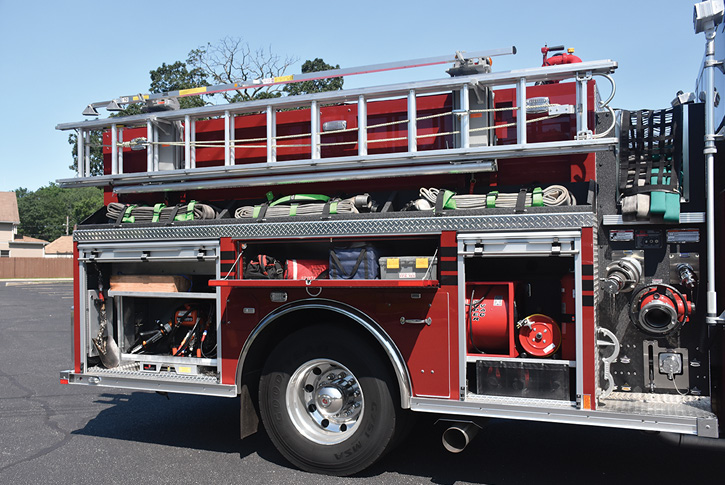
3 The officer’s side Holmatro combi tool, fans, high-rise hose packs, electric reels, and assorted tools.
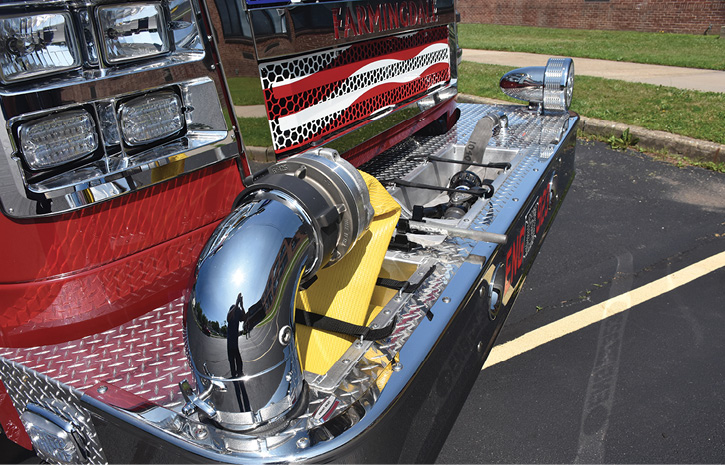
4 A swivel front suction and trash line on an extended front bumper.
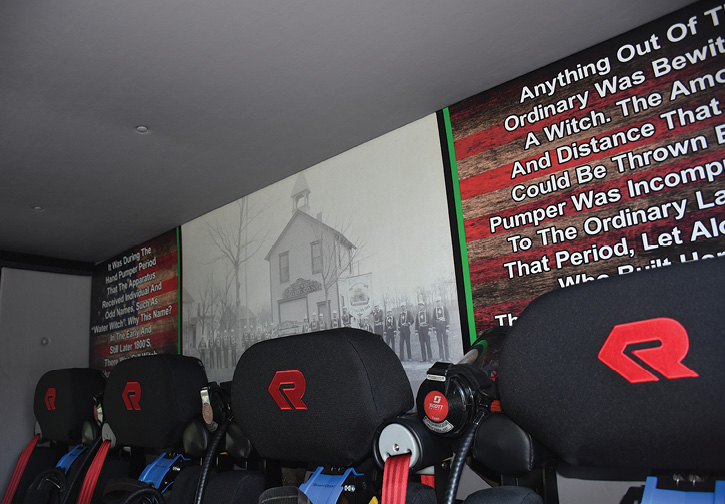
5 The historical mural found on the rear wall of each cab.
RIG FEATURES
Hose loads on the two pumpers are 1,000 feet of 5-inch large-diameter hose, two beds of six lengths of 1¾-inch hose on top of six lengths of 2½-inch hose, 250 feet of 2½-inch hose in the rear of the engines, and 150 feet of 1¾-inch trash line in the extended front bumpers. “One of the most unique ideas put on both vehicles was a historical mural that was designed and placed on the rear wall inside the cabs,” says Buser. “It shows our original apparatus and some of our past members. It was a brainchild of one of our captains who was very passionate about our company history. We also painted the tops of the cabs black to honor our fallen members. The concept is that we will always have our founding members riding with us at all times.
Water Witch Engine Company Apparatus Through the Years |
“So far, the vehicles are working out well,” he continues. “The driving and handling of the rigs around town are working out well so far. We also have some tight streets, and operating the two pumpers around our response area is really going well.”
The Farmingdale Fire Department overcame its financial problems with the village and was able to purchase two pumpers using an apparatus purchasing consortium and was able to save money and purchase what it wanted for its response district. It was also able to design apparatus that have short wheelbases with bigger compartments and low hosebeds for easier operations for its firefighters. The pumpers are easily maneuvered around the village because of their short wheelbases and handle well.
Sitting down with your truck committee to plan for your apparatus needs while taking into account your finances is something that shouldn’t be taken lightly. If you plan accordingly and think outside of the box when you’re formulating your specs, you should alleviate most of your problems.
BOB VACCARO has more than 40 years of fire service experience. He is a former chief of the Deer Park (NY) Fire Department. Vaccaro has also worked for the Insurance Services Office, the New York Fire Patrol, and several major commercial insurance companies as a senior loss-control consultant. He is a life member of the IAFC.

